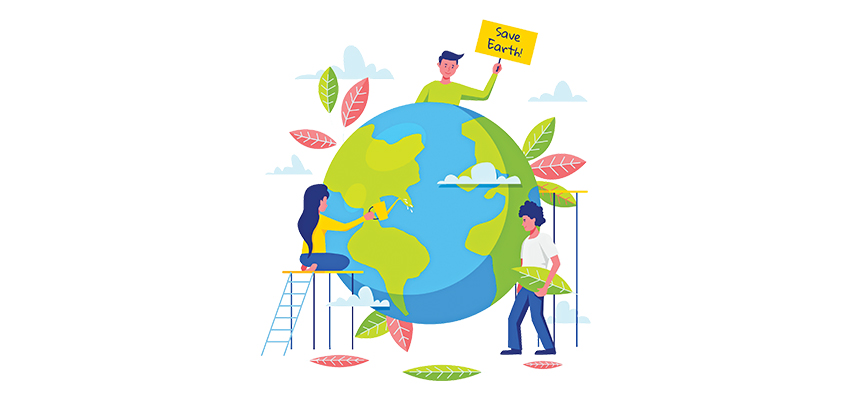Nature in the balance What companies can do to restore natural capital

Specific corporate actions, many with a positive return on investment, could help reverse the trend of the depletion of natural capital
Human activity seems to have pushed the planet outside a ‘safe operating space’ on four planetary boundaries
While climate change and some of its cascading impacts are now more familiar, the planetary-boundaries framework outlines eight additional Earth systems that, if destabilised beyond a defined level, could trigger a tipping point and lead to irreversible environmental changes
Economic activity fundamentally depends on natural capital, the world’s stock of natural assets. But today, natural capital is being rapidly depleted, which has increasingly tangible consequences, from water shortages in California to a nitrogen crisis in the Netherlands.
The issue is a critical one: natural capital is in decline across multiple dimensions. By one estimate, current demands require resources at least 1.8 times greater than what the Earth appears to be able to sustain at this point. Yet fatalism would be misplaced. One of our key findings is that while a range of economic sectors contribute to this depletion of natural capital, specific actions taken by companies using current technologies—and supported by broader enabling actions of the whole of society—could not only reverse the trend but also generate positive return on investment (ROI) in a substantial number of cases.
To frame our research, we use the latest scientific research on planetary boundaries. Introduced in 2009 and updated in 2015, these boundaries provide a framework for tracking the planet’s ability to support human development. The framework defines a safe operating space for humanity with respect to the systems and processes that govern the stability of the Earth’s atmosphere, oceans, and ecosystems. While climate change and some of its cascading impacts are now more familiar, the planetary-boundaries framework outlines eight additional Earth systems that, if destabilised beyond a defined level, could trigger a tipping point and lead to irreversible environmental changes, according to what we know today.
We find that the impact of human activity is already extending beyond the safe operating space for at least four boundaries: biodiversity loss, chemical and plastic pollution, nutrient pollution, and greenhouse-gas (GHG) emissions. For two other boundaries—forest cover loss and freshwater consumption—the current impact of human activity is deemed to be in the “zone of uncertainty.”
Terrestrial biodiversity loss stands out, at an estimated 2.7 times beyond the planetary boundary as currently understood and 1.4 times beyond 1970 levels. This raises an alarm not only because of its direct impact on humanity but also because of the feedback loops between biodiversity and the other planetary boundaries.
Another standout boundary is chemical and plastic pollution. We estimate that the world economy currently emits 2.6 times more plastic into water sources each year than it did in 2010— negatively affecting species, ecosystems, and food webs, and reducing the ability of oceans to sequester carbon.
As part of our analysis of the planetary boundaries, we estimate the contributions of economic sectors to the current position of each boundary. Based on this analysis, the agriculture sector in particular has the single largest direct impact.
The retail sales and services sector— which includes retail, accommodation and food services, IT, finance, insurance, professional and support services, education, health, and entertainment—is also a major contributor to the nature's impact across multiple boundaries, notably chemical and plastic pollution.
Food systems have the most significant impact on the environment: they are the largest contributing sector for five of the nine planetary-boundary control variables we assessed. Our midpoint estimates suggest that crop agriculture accounts for 72 per cent of freshwater consumption, 61 per cent of nitrogen runoff pollution, and 32 per cent of terrestrial biodiversity loss. We estimate that livestock agriculture is the largest contributor to biodiversity loss (53 per cent), and phosphorus pollution is the second- largest contributor to nitrogen runoff and deposition (51 per cent).
The disproportionate estimated impact of agriculture stems from its direct land footprint and the strong influence of downstream sectors such as the food- processing industry. Therefore, many actions that would address the impact of agriculture on natural capital would require sustained behavioural and operational changes from downstream actors, from individual households to buyers of agricultural products, including food processing companies, groceries, and restaurants.
According to our midpoint estimates, retail sales and services account for 77 per cent of chemical and plastic pollution (as measured by plastic waste emissions in aquatic environments). Previous McKinsey research has identified that the power sector and industry are the largest contributors to the GHG emissions that drive climate change.
Corporate action could help set natural capital on a path to recovery by 2050
Our research suggests that companies have the potential to shift the world’s trajectory on natural capital and usher in a return to a safe operating space for humanity by 2050. It also suggests that they could do so through a set of targeted actions that use existing technologies and, in many cases, could provide positive returns on investment.

Our research assesses the effect of 47 potential corporate actions across five planetary boundaries: biodiversity loss, forest cover loss, freshwater consumption, chemical and plastic pollution, and nutrient pollution.
Overall, our analysis suggests that corporate action could potentially return the world to safe levels in three of the planetary boundaries: forest cover loss, freshwater consumption, and nutrient pollution. The sized levers could also address 48 per cent of the projected coverage of the boundary for biodiversity (getting close to a pre-1970 level) and 60 per cent of the identified boundary for chemical and plastic pollution.
While corporate action can make a difference, our analysis suggests it is not sufficient on its own. “Whole of society” levers such as nature conservation or consumer dietary shifts could help close the remaining gaps, as could technologies that are not yet widely available, including those that can break down plastic or extend the shelf life of foods.
The abatement potential we present assumes each opportunity is, where feasible, pursued systematically and completely across the world; that there is collaboration and coordination between upstream and downstream partners (for instance, between farmers and the buyers of agricultural products); and that policy makers and other stakeholders create enabling conditions.